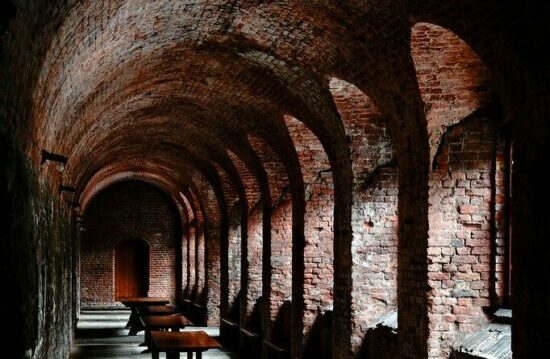Introduction
“The Charterhouse of Parma” by Stendhal is a renowned novel that captivates readers with its intricate plot, vivid characters, and profound themes. In this article, we will delve into the various aspects of the novel, including its plot, characters, themes, writing style, setting, historical context, and overall impact on literature. By examining these elements, we can gain a deeper understanding of Stendhal’s literary masterpiece.
Plot and Storyline
“The Charterhouse of Parma” follows the life of Fabrizio del Dongo, a young Italian nobleman, during the tumultuous period of the Napoleonic Wars. The novel begins with Fabrizio’s sheltered upbringing in his ancestral castle and his subsequent adventures as he becomes entangled in political intrigues and romantic entanglements. Throughout the story, Fabrizio’s journey takes him from Parma to the battlefield and from prison to the heights of power, all while navigating the complexities of love, loyalty, and self-discovery.
Characters
Stendhal presents a rich ensemble of characters in “The Charterhouse of Parma,” each contributing to the tapestry of the narrative. Fabrizio del Dongo, the protagonist, undergoes significant development throughout the novel. He starts out innocent and impulsive but develops into a more thoughtful and mature person as a result of his experiences and interactions with other characters. Other notable figures include Clelia Conti, Fabrizio’s cousin and love interest, who embodies resilience and moral strength, and Count Mosca, a cunning politician who becomes Fabrizio’s mentor. These characters, along with many others, play pivotal roles in advancing the plot and exploring the novel’s underlying themes.
Themes and Symbols
“The Charterhouse of Parma” delves into several significant themes that resonate with readers. Love and passion, both romantic and political, are central themes in the novel. Stendhal portrays the complexities and contradictions of human emotions, highlighting how love can be both a source of fulfillment and a destructive force. The theme of power and its corrupting influence is also explored, as characters navigate the treacherous waters of political ambition. Additionally, the novel examines the interplay between fate and personal agency, showcasing how individuals are shaped by external circumstances while also possessing the capacity to shape their own destinies. Stendhal skillfully employs symbols such as the Charterhouse itself, which represents a sanctuary and spiritual retreat, contrasting with the harsh realities of the outside world.
Writing Style
Stendhal’s writing style in “The Charterhouse of Parma” is characterized by its clarity, precision, and psychological insight. His prose is elegant and evocative, allowing readers to immerse themselves in the story’s rich tapestry. Stendhal employs various literary techniques, including vivid descriptions, internal monologues, and ironic commentary, to bring the characters and their inner worlds to life. One notable aspect of his style is the use of free indirect discourse, seamlessly blending the narrator’s voice with the characters’ thoughts and feelings. This technique enhances the reader’s connection to the characters and deepens their understanding of their motivations and struggles.
Setting and Atmosphere
The novel is primarily set in Parma, Italy, during the early 19th century, against the backdrop of the Napoleonic Wars. Stendhal vividly portrays the social and political climate of the time, capturing the tensions and uncertainties of a society in flux. The contrasting settings, from the opulent court of Parma to the brutal realities of war, contribute to the novel’s atmospheric richness. Stendhal skillfully utilizes the geographical and cultural context to underscore the characters’ experiences and the choices they face.
Historical, Social, or Political Context
“The Charterhouse of Parma” reflects the historical and political context in which it was written and set. Stendhal himself lived during the Napoleonic era, and the novel reflects his firsthand experiences and observations of the period. The novel critiques the political machinations and corruption of the time, while also exploring the impact of war on individuals and society. Stendhal’s portrayal of the Italian society of that era provides valuable insights into the tensions between traditional aristocratic values and the ideals of the emerging nation-state.
Impact and Reception
“The Charterhouse of Parma” has left an indelible mark on literature and continues to be celebrated for its literary merits. Although initially met with mixed reactions upon its publication in 1839, the novel has since gained recognition as a masterwork of French literature. It has influenced subsequent generations of writers, particularly in its psychological depth and exploration of human emotions. Critics and academics alike have praised Stendhal’s realistic portrayal of characters and his inventive narrative techniques. The novel’s enduring cultural significance lies in its ability to capture the essence of human nature and its universal themes.
Final Conclusions
“The Charterhouse of Parma” by Stendhal is a literary masterpiece that weaves together a captivating plot, complex characters, profound themes, and masterful writing. Through its exploration of love, power, fate, and the human condition, the novel resonates with readers and offers valuable insights into the complexities of life. Stendhal’s writing style, with its clear prose, psychological depth, and skillful use of literary techniques, enhances the reader’s experience and immerses them in the world of the story. The setting and atmosphere, influenced by the historical and political context of the Napoleonic era, provide a rich backdrop for the characters’ journeys. “The Charterhouse of Parma” has had a lasting impact on literature, influencing subsequent works and garnering recognition for its artistic merit. Its enduring legacy lies in its ability to illuminate timeless truths about the human experience, making it a must-read for lovers of literature.
How does Stendhal explore the theme of love in “The Charterhouse of Parma,” and what insights does he offer about the complexities of human emotions?
Stendhal delves deeply into the theme of love in “The Charterhouse of Parma,” presenting various manifestations of love and exploring its profound impact on the characters’ lives. Romantic love is a central focus, as seen through the tumultuous relationships between Fabrizio del Dongo and Clelia Conti, as well as Fabrizio’s infatuation with the beautiful Duchess Sanseverina. Stendhal portrays love as a force that can bring joy, passion, and fulfillment, but can also lead to heartbreak, jealousy, and moral dilemmas.
Through his depiction of these relationships, Stendhal offers insights into the complexities of human emotions. He highlights the irrational and often contradictory nature of love, showing how it can drive individuals to act against their own self-interests or societal expectations. Stendhal emphasizes the influence of external factors, such as social status and political ambition, on the dynamics of love. The characters’ desires for power, recognition, and security often intertwine with their romantic attachments, leading to conflicts and compromises.
Furthermore, Stendhal explores the tension between love and duty, as characters must navigate between their personal desires and their obligations to family, society, and political alliances. This conflict between passion and responsibility adds layers of complexity to the characters’ relationships and highlights the internal struggles they face in reconciling their emotions with societal expectations.
Overall, Stendhal’s exploration of love in “The Charterhouse of Parma” reveals the intricacies of human emotions, portraying love as a multifaceted and transformative force that shapes the characters’ lives and decisions.
How does Stendhal use the historical context of the Napoleonic era to enhance the narrative and themes in “The Charterhouse of Parma”?
“The Charterhouse of Parma” is intricately interwoven with the historical context of the Napoleonic era, and Stendhal utilizes this backdrop to enhance the narrative and themes of the novel.
Firstly, the turbulent political climate of the time provides fertile ground for exploring themes of power, ambition, and corruption. Stendhal depicts the shifting alliances, political intrigues, and struggles for power that characterized the Napoleonic era. The characters, particularly Fabrizio, find themselves caught in the midst of these political machinations, highlighting the impact of historical events on individual lives. Stendhal portrays the corrupting influence of power and the compromises individuals make to advance their own interests, reflecting the broader societal and political dynamics of the time.
Secondly, the Napoleonic Wars serve as a backdrop for examining the psychological effects of war on individuals and society. Stendhal vividly portrays the physical and emotional toll of warfare, depicting battle scenes, military campaigns, and the experiences of soldiers. The horrors of war and its aftermath are juxtaposed with the characters’ personal journeys, revealing the transformative effects of conflict on their lives and identities.
Additionally, Stendhal utilizes the historical context to explore the tensions between traditional aristocratic values and the emerging ideals of the nation-state. The novel reflects the social changes and aspirations for independence that characterized Italy during this period. Stendhal portrays the clash between the old feudal order and the forces of modernity, highlighting the struggles of characters like Fabrizio, who grapple with their loyalty to traditional aristocratic values while yearning for a more egalitarian society.
In summary, Stendhal masterfully incorporates the historical context of the Napoleonic era in “The Charterhouse of Parma” to enrich the narrative, deepen the exploration of themes, and offer commentary on the societal and political dynamics of the time.
Sources
The Charterhouse of Parma – Wikipedia






